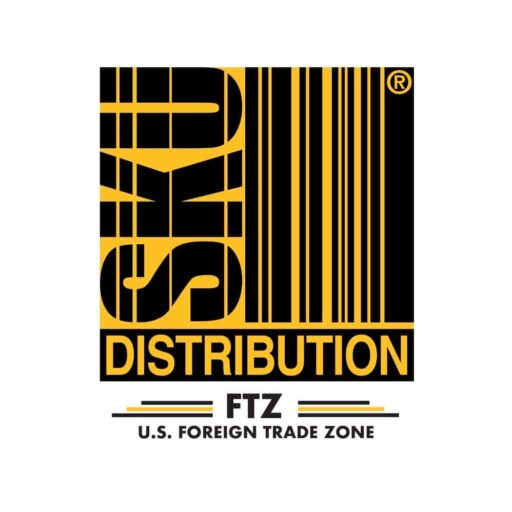Shopping online has drastically changed the shipping industry. Statistics show that 90% of the world’s goods are ferried by sea from their point of origin to the final destination. E-commerce shipping is a huge part of this percentage as shoppers enjoy the affordability and convenience of having their purchases shipped to them.
However, for the retailer, offering shipping services to customers should be approached with a keen eye on the bottom line. This means managing the shipping costs in order to keep the business profitable. E-commerce utilizes both freight and normal shipping. Here’s our guide at SKU distribution for calculating shipping costs.
Related: Order fulfillments: What Is It and Why is It Important?
Factors that affect shipping costs
Classification
Freight is classified into five categories. These include full truckload, partial truckload, less than truckload, expedited freight and intermodal. Lower end freight classes like partial and less than truckload attract lower freight costs while high-end freight classes like expedited freight will attract higher costs.
Other factors that contribute to the classification of freight include the density and weight of the shipment.
Shipment Density
The higher the density of a shipment, the less space it takes up on the freight and the lower the density, the more space it takes. The pricing is determined by the package volume in relation to the space it occupies. To calculate the density of a shipment, divide the total weight per cubic meter.
Shipment Weight
Weight contributes to shipping costs. The weight determines which pre-defined freight group the shipment finds itself in. As the shipment increases in weight, it moves from one predefined group to another and shipping charges apply accordingly.
Demand for freight
The higher the volume of product being moved, the more limited the space on the freight. When the capacity of the freight is limited, then the freight operators will be inclined to sell the limited space at premium costs.
Government regulations
Government regulations in various parts of the world can impact freight movement which will affect the overall cost of moving products. For example, if the government imposes a curfew or limits the driving hours for freight drivers, then it means the cost of shipping increases.
Related: How Are SKUs Used in eCommerce
Fuel costs
When the prices of fuel go up, so do shipping costs. Since the carriers can’t influence the increase or decrease of fuel costs, they pass on the hiked cost to the merchants. Also, the longer the distance between the source and destination of the product, the more fuel is consumed by the carrier. This means that the merchant transporting their product over longer distances will pay much more than one transporting over shorter distances.
Events
Political events and natural events (like a change in weather) can also contribute to higher costs of shipping. If they interfere with the smooth running of the freight service, they may delay or cause detours that hike up the price.
The choice of carrier
The shipping rates are determined by the carrier one chooses. Depending on the carrier the merchant chooses they can get tariff rates or negotiated rates. It’s easier to get negotiated rates with freight companies that one has been working with over an extended period of time.
Find out more about SKU Distribution 3PL services.
How to calculate shipping cost
Take the measurements
Determining the package dimensions gives the true reflection of which pre-defined freight group the package will end up in and how much that costs. As a rule, shipping carriers use dimension weight to determine the pricing of shipping which is how they have ended up with the pre-defined pricing groups.
Carriers focus on either the dimensional weight or the actual weight of the shipment and usually choose the highest weight to bill the company. To get the dimensional weight, multiply the height by the width by the length and then divide by a standard dimensional weight divisor. The actual weight is what shows on the scale when the shipment is weighed.
The good news is that one can control the dimensions of their package by making it snug enough to fit all their products. Large dimensions inflate the shipping costs so keeping the dimensions to a minimum will result in lower costs.
Distance
The longer the distance, the more expensive the shipping cost. Even if the products originate from the same source destination the shipping carriers may use different routes with different shipping zones. This may mean more charges for the shipping depending on the shipping zone.
Unfortunately, there is nothing one can do to mitigate the distance traveled by the carrier when delivering the goods. However, with time and expansion, consider using a fulfillment warehouse that keeps products closer to one’s customers to cut out shipping costs.
Delivery
Expedited delivery will cost more than the standard delivery. This means that the more perks one wants with their shipping option the more they will pay. For example, if one wants expedited shipping with home delivery or one on one delivery, the cost of shipping will be markedly higher than if without these perks.
Contents
The delicate nature of the package may drive the cost of shipping up. For example, if the carrier is transporting some biochemicals or exotic wild animals, it’ll cost the company more because the contents may limit how much more cargo or packages they can carry.
Insurance is important when dealing with delicate contents because they may get damaged, lost or stolen. Such unexpected problems should prompt companies to set aside a budget for emergencies. This may mean spending more than originally intended.
Tracking
Tracking may be an additional cost (even though it’s a crucial component of efficient shipping). Some carriers offer this as a service, but one can use more comprehensive tracking from third-party service providers.
Find out how SKU Distribution pricing works here.
How to manage shipping cost
Negotiate shipping rates
Negotiating for affordable shipping rates is the primary way for a business to mitigate shipping costs and still achieve their bottom line. As the business grows, it’s inevitable that the company becomes a high volume shipper. However, if one continues with unnegotiated rates they are unable to make a profit regardless of their massive clientele.
To get better rates, begin by building a decent business relationship with the account manager. Once a merchant begins a strong professional relationship with their carriers, they’ll be assigned an account manager. Keep the relationship current and relevant by letting them know when there are any changes in the amount of product being shipped. Call them up with inquiries and make them feel relevant to the business’s operations.
Prove your worth
Before broaching the subject of negotiation, the business has to prove through their data that they move substantial numbers. Most carriers give merchants the time to prove their ability through their sales. Once it’s proven that the merchant is indeed using the carrier to move volumes, they can negotiate discounted rates. Unfortunately, if the volumes go down, one may lose their discounted rates.
It’s crucial for the merchant to identify ways in their operations that make them a prime candidate for the carrier. Make sure the carrier notices such profitable trends like consistently shipping large volumes through one route or shipping all products on one specific day. Showing the carrier how valuable the business is opens the avenue for better-negotiated rates.
Look out for hidden charges
There are several surcharges and hidden fees that one may not be aware of during shipping. They include
Handling charges
If a package is not easy to handle or requires additional care when handling, one may be hit with additional handling charges. For example, when shipping dangerous material or super delicate items like art an additional fee will usually apply as a percentage of the value of the goods. Handling charges also apply to packages that are above their weight limit. The best way to avoid handling charges may be to use sea freight.
Tax and duty charges
Taxes apply for shipping internationally. There are two types of taxes: DDP and DDU. DDP (delivery duty paid) is duty and tax paid by the sender while DDU (delivery duty unpaid) is the tax and duty paid by the recipient when they receive the package.
The worst mistake people make is under-declaring the value of their shipment to customs. Regardless of the amount of money in hidden charges, understating the value of items in a shipment will incur even more charges, penalties and possible impoundment of the shipment by customs.
Research
Do your research and make sure you check out all of the shipping center’s services. It’s important to make sure your shipping center integrates with your online platform and is well-priced. At SKU Distribution, we’re committed to giving you competitive rates for a high value. Contact us for a quote.
How to compare shipping prices online
You can use a shipping calculator and shipping comparison site to compare shipping prices online. Think of it like comparing flight prices. However, keep in mind that these are only estimates. The best way to get an accurate shipping price is to calculate your shipping fulfillment center directly. This also gives you a chance to understand why the price is what it is and see whether or not there is room for negotiation.
Shipping Calculator
eBay shipping calculator
To quickly calculate shipping from the U.S. one can use the eBay shipping calculator. All one needs to do is to feed information about the package like weight and dimensions. Perhaps the most interesting part of using the eBay shipping calculator is the weight estimator. Since not everyone has a weighing scale handy they can estimate the weight of their package by comparing it to common items like a basketball.
The step by step process is straightforward. Choose the ‘Calculated: cost varies by buyer location’ tab then select the calculate shipping tab. Enter the dimensions, weight and type of package into the chipping calculator details section.
Next enter the sender’s ZIP code and destination of the package. Now select calculate shipping. The tool will calculate the shipping cost automatically based on the weight, dimensions, and location of the shipment. As an e-commerce platform, this calculator makes using eBay convenient.
Amazon shipping calculator
This calculator also helps users to compare freight shipping services and prices from ocean, trucking and air. The Amazon shipping calculator gives estimates for shipping from suppliers to either the nearest port, fulfillment warehouse.
Select the types of package. Enter the weight, origin, dimensions and quantities and search for the cheapest available couriers by clicking on the find and compare quotes tab. This calculator is created for Amazon FBA sellers to calculate the shipping costs from the supplier to an Amazon fulfillment center or warehouse.
Keep in mind that SKU Distribution integrates with both Ebay and Amazon. For a quote, contact us directly.
Conclusion
Shipping impacts the customer experience. But while one may want to focus on giving their customer the best customer experience, they can’t neglect their profit margins. The secret to attaining both is being savvy with managing the cost of shipping and calculating the cost to the last center. Check out our order fulfillment services at SKU Distribution to get started.










